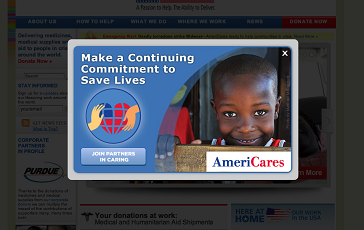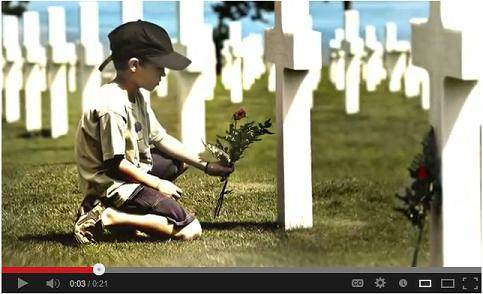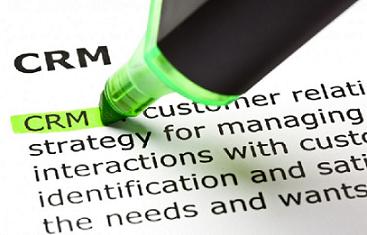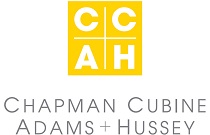
Leveraging Direct Mail and Digital Marketing Together for "Surround Sound" in Fundraising and Marketing
 At our disposal are a multitude of vehicles in which to deliver our marketing and fundraising messages. The combined power of mail and digital marketing to formulate a holistic “surround sound” can deliver formidable marketing messaging and create synergy between all available and appropriate channels.
At our disposal are a multitude of vehicles in which to deliver our marketing and fundraising messages. The combined power of mail and digital marketing to formulate a holistic “surround sound” can deliver formidable marketing messaging and create synergy between all available and appropriate channels.
Here are six tips for creating your own fundraising and marketing surround sound:
- Understand the “end goal” you are looking to accomplish and the metrics for measuring success, so that the optimal communication plan can be devised across the mail and digital assets you have.
- Are we looking to raise money?
- Are we looking for new supporters?
- Are we looking to facilitate an action?
- Are we looking to raise awareness around an issue or an event?
- Do we want to build social buzz and stimulate Influencers?
- Engage all key stakeholders -- the offline team and digital teams -- in regular status meetings to ensure there are no missed opportunities to create cohesive and personalized messaging platforms, leverage learnings and testing concepts in both arenas. Not everything that works in one channel will work in another -- but if you have testing wins in one, it makes sense to try testing it in the other.
- Identify the key constituent audiences relevant to a successful outcome and the channels they are most active in. This will help tailor the best contact cadence to deliver results offline, online and through telemarketing. Your segmentation strategies and tactical execution of the segmentation blueprint will allow you to drive your constituents toward the outcome you are striving for and help determine how your messaging arc will evolve with the best ROI across all channels.
- Pillar direct mail appeals are the best starting place for integration efforts in the mail and on the digital front. Using elements from the direct mail piece to reinforce the creative treatment and messaging online will help underscore the primary and key points you are working to communicate so that your online constituents will be receptive to the companion mail piece when it is received. On the flip side -- using the mail piece to drive donors to the website or campaign donation page can also generate increased participation and results. You can utilize incentives to encourage this -- for example, a direct mail piece can say that if you make a gift to the 2-to-1 Match Campaign online, your gift will be matched 3-to-1, going further and having a greater impact.
- There are a number of products and suppliers that can help facilitate a digital ad campaign to support an offline appeal -- creating multiple impressions in advance of a mail piece, thereby improving offline results by encouraging stronger long term value of those donors who are exposed to the ad and building a stronger connection to your organization. This can help acquisition, reinstatement and renewal efforts.
- If you conduct surveys offline and/or online -- use the tallied responses to report back to your constituents on the results and to tailor future messaging, creating dialog and engagement. Capturing key data will also allow you to better understand a constituent’s area(s) of interest to improve your communications.
5 Challenges to Effective Integrated Marketing for Nonprofits
Integration is not only a common buzzword these days, but also a goal of many nonprofit direct response and development plans. And, while many organizations work in multiple channels, many are still working to integrate their entire program. Also, there are many challenges to building and maintaining an integrated program, including five common ones I’ll introduce below.
But first, let me give a loose definition of what I mean by “integration”. Specifically, these challenges address building a direct response program (even if you start with just one campaign) with the goal of enhancing donor engagement and driving conversion with messaging and planned timing across multiple touch points. In other words, ensuring communications are centered on the donor’s experience with your organization as she consumes information -- and responds -- in what has become a very multi-channel way. But, admittedly, this isn’t always easy.
Here are five common challenges along with some hints at what you can do to make sure you are up to the task of meeting them. (And, the good news is that it is usually worth the effort!)
Challenge #1: Where to Start?
Maybe you are firing on all cylinders when it comes to building an integrated program. But if not, determining where start, or make your next investment, can be challenging.
Is your organization crawling, walking, or running when it comes to integrated marketing and donor communications? And be honest, because knowing what level of complexity is realistic at the start will help build a stronger program faster in the long run.
Remember, no matter where you start, integrated marketing requires some level of increased complexity and activity. The question is how much. If you are just starting, don’t get overly complex. Pick your biggest segments/program areas/campaigns and start there. And if you run into an obstacle, which you likely will, get as far as you can. Next time, you’ll go further!
 A great program area to consider for your next integration project is a Sustainer/Monthly Giving program. A good Sustainer program can become a cornerstone of your direct response program (if it’s not already), and multi-channel efforts have proven particularly effective in converting donors to sustainers. Plus, many organizations prefer their sustainers be driven online or converted by phone to encourage the use of credit cards instead of checks.
A great program area to consider for your next integration project is a Sustainer/Monthly Giving program. A good Sustainer program can become a cornerstone of your direct response program (if it’s not already), and multi-channel efforts have proven particularly effective in converting donors to sustainers. Plus, many organizations prefer their sustainers be driven online or converted by phone to encourage the use of credit cards instead of checks.
On the campaign side, the biggest direct response campaigns should be the first targets for building out or improving your integrated efforts. Year-End or your highest performing campaigns are a good place to start because your return will be higher by optimizing what is already successful.
What you can do:
- Identify and accept your organization’s life cycle stage and plan accordingly.
- Pick a recommended campaign/program area/segment and start planning 4 – 6 months in advance.
Challenge #2: Messaging & Content
As mentioned previously, it’s not good enough to be just working in multiple channels. It’s important to integrate your messaging across channels and platforms so that you can provide a donor-centric experience. That doesn’t mean using exactly the same words, but the theme and feel should be consistent across communications, all the way through the end of the desired action (i.e., donation/conversion). This also means additional planning -- possibly working with multiple internal departments, as well as possible development of additional content and stories highlighting the impact the donors have through your organization.
What you can do:
- Plot out Messaging and Content Strategy at beginning.
- Take stock of resources (tech, staff, photos, budgets) early.
Challenge #3: Data & Tracking
This can be a big one. While using and looking at data by channel may be familiar, more complex integration requires that our data provide a “holistic view” of what the donor has received and what actions she has taken. It is this information upon which many integration plans are built.
Might sound easy enough, but as many of us know too well, data often exists in different silos and platforms. Even for those systems that sync, the information flow must be understood to make sure we are getting the right message to the right donor at the right time. The same can be said about looking at the results: Make sure you look not just at the channel by itself, but also by the segments of what they received.
What you can do:
- Diagram existing data flow across channels, and look for where work-arounds would need to be built to sync the data or modify plans accordingly.
- Plan out results tracking procedures in advance.
- Don’t despair, just work within the constraints you currently have and try to fix them over time.
Challenge #4: Organization Buy-In & Participation
As if you are not working hard enough making this all happen, whether walking or running, you probably have to “sell” others in your organization on this concept as well. You may need more resources and time from others in your organization to start pushing out or increasing integrated campaigns. And, the more complex both your organization and your program are, the more that involvement is needed from across your organization. And often, this means proving that it’s worth it. Fortunately, the benefits of integrating marketing are well documented.
What you can do:
- Start Cross-Departmental Communications and Planning well in advance
- Be prepared. Here are some good resources:
Challenge #5: Increased Complexity & Activity
The first four challenges all add up to our fifth challenge: the increased complexity and activity that can come with an integrated program. So, make sure you plan for this fact. You’ll need to dedicate more time (and likely resources), and so will others within your organization.
What you can do:
- Build an organization-wide communication calendar (view a sample basic multi-channel calendar).
- Start planning well in advance.
- Look for easy-win “value adds” to fold in (ecards, print gift cards, sustainer upgrades, thank you videos, ecommerce).
The good news is that integrated marketing frequently pays back returns. Not to mention, and largely in part because, it helps you drive an experience where your donor feels more aligned with your mission and impact.
Share, Like and Post | | Article Link | CommentBetting on Success: How a Veterans' Charity Made a Splash at the Super Bowl
This article was written by guest blogger Brock Warner. Brock is a fundraiser for War Child Canada & US, as well as a TEDx speaker on philanthropy, a blogger, and volunteer with the AFP Greater Toronto Area chapter.
 We all like to think when an opportunity knocks, we’ll be ready. But what if that opportunity is bigger than you could have ever expected? What if that opportunity is a chance in the spotlight during the most watched annual sporting event in the world? That’s right – the Super Bowl.
We all like to think when an opportunity knocks, we’ll be ready. But what if that opportunity is bigger than you could have ever expected? What if that opportunity is a chance in the spotlight during the most watched annual sporting event in the world? That’s right – the Super Bowl.
Wounded Warrior Project® (WWP) received this opportunity when they received a call from CBS informing them that a donated awareness commercial would air during the fourth quarter of the Super Bowl. Fitting the timing in the game, WWP decided to put everything on the line by pulling together a multi-channel fundraising campaign unlike any the organization had seen before.
The mission of WWP is to honor and empower Wounded Warriors. The organization helps Wounded Warriors making their way through recovery and adjustment to civilian life. The WWP vision is to foster the most successful, well-adjusted generation of wounded service members in our nation’s history. With the ever-changing needs of this generation, it is critical that WWP ensures the long-term needs of wounded veterans are never forgotten.
To drive donations and acquire potential new donors, the ad featured a $10 text-to-give call to action. To extend the reach of this ad, the digital team at WWP along with WWP marketing and communications, IT, social media teams, their fundraising agency, and CBS pulled together, integrated, and launched:
- Campaign-specific Facebook and Twitter updates
- Paid Facebook advertising, targeting NFL and WWP fans
- Search Engine Marketing, including re-marketing tactics
- Segmented emails, with waves to non-responders
- Social sharing functionality on all donation pages
- Custom YouTube content for content-rich sharing
The Super Bowl was an incredible platform to educate the public, drive awareness and funding for life-saving WWP programming, and reach potential warriors and families who may need the support of WWP. The WWP team was all in!
Campaign impact:
- 53% increase in web traffic over prior week, directly related to the Super Bowl ad donation.
- Over $310,000 in Super Bowl-attributed donations.
- Social media sharing resulted in over 850 referrals to the donation page.
- Despite the advertisement’s $10 ask, the average gift was significantly higher due to incorporation of other digital channels.
While a Super Bowl commercial can bring tremendous exposure, there always loomed a possibility that an improperly executed campaign might fail to deliver on fundraising and supporter engagement. This wasn’t the case, and thanks to the opportunity provided by CBS, WWP was able to leverage its team under one unyielding mission – to honor and empower Wounded Warriors.
Congratulations to Wounded Warrior Project, a well-deserved victory for a great cause.
Share, Like and Post | | Article Link | CommentLeveraging CRM Software for More Effective Constituent Engagement
This article was written by guest author Tim Grailer, CRM Product Manager from Blackbaud.
 In my role as a product manager, I speak with many users and leaders about CRM software. I want to understand what a CRM is to them, and I try to get a sense of their expectations – what outcomes are they trying to achieve that their CRM software can enable. Typical answers include: a donor database, a place to capture all of the interactions with my constituents and revenue, and an environment where I can track the progress of a solicitation or cultivation effort.
In my role as a product manager, I speak with many users and leaders about CRM software. I want to understand what a CRM is to them, and I try to get a sense of their expectations – what outcomes are they trying to achieve that their CRM software can enable. Typical answers include: a donor database, a place to capture all of the interactions with my constituents and revenue, and an environment where I can track the progress of a solicitation or cultivation effort.
Sometimes, we get one step further – to action. Why do you capture all of that data? Why is the “360 degree view” of a constituent so important? What are you going to do with it?
Ah, here is where the value of CRM software comes in. All of the other stuff is the work to support the outcome. So what are some outcomes?
- Improve the experience of our constituents and communications
- Better target our constituents to maximize our investment
- Identify new engagement opportunities and constituents
- Mine for trends for forecasting and budgeting
- Focus our investment efforts
In the end, organizations are looking to provide the best experience for their constituents while maximizing the return on their investment. “Yes! That’s why we collect all of that data!”
So how can we use a CRM system to drive a strategy that accomplishes much of the above?
CRM Software is a Tool
First, we need to recognize that CRM software is a tool to accomplish the strategy, not a replacement for a strategy. The software will not magically increase your response rates or average gift. It will not immediately solve for gaps in business processes.
In order to make sure your tool is working correctly, there are a couple of regular “maintenance checks” you should make to ensure that you are getting the most out of your data.
Data Hygiene
Regular NCOA updates and name and address standardization processes will ensure that your postal mail is in proper working order. Make sure you have the most up-to-date information on your constituents’ whereabouts – ensuring that you can contact them regularly. It will improve your responses, as well as save costs.
Data Collection
One huge mistake that many organizations make is not taking every opportunity or touch point with a constituent to collect and refine the data that they have on them. Many organizations I have worked with are hesitant to ask for an email address on a response device or a phone number on donation form. This information is vital, not just to increase the possible solicitation channels, but more to be able to contact a constituent about an interesting piece of information or to resolve an issue with a donation or communication. And honestly, if you ask and only 15% offer this information to you, consider appending email addresses, telephone numbers, deceased status, etc so you have this information.
Contact information is not the only thing to collect. Ask constituents through what channel and how often they want to be communicated with. It will establish a stronger trust relationship between the organization and the constituent, and ensure that the information you are providing is relevant and on topic. In addition, targeted content has shown to dramatically improve response rates.
Determine what types of communication strategies your organization can support and offer those options to your constituents. They will thank you, and so will your bottom line!
Data Enrichment
We all know that data is power. Data can also be expensive. Think about the problem that you are trying to solve to help to identify what data might be useful in solving it. Don’t fall into the trap of more data is always better. Not true. Useful data is always better! Start at your strategy and work your way down through to the operational aspects. Use that process to identify what you need and how you will get it. Collect it from low-cost mechanisms first (from the constituent directly or partners) and then move on to purchasing. A little time now saves costs and headaches later on.
Posing the Right Questions
As software is becoming “smarter,” it is starting to identify ways of answering questions before we even pose them. However, in most cases, it’s not quite there yet. I always start by deciding which constituents you consider your “model” constituents. These might be high responders, high lifetime value, major donors, consistent advocates, or a mix. Identify these donors in your database and do a cluster type analysis. Using the data you have, you can understand what correlates these folks together – both from a demographic and psychographic perspective, and also in terms of treatment strategies.
Conversely, do a similar analysis of historic non-responders to a given channel. Use this information to develop different personas and develop different treatment strategies.
This way, you can begin to understand what indicators exist and what treatments work to move donors through the life cycle. Using this information, you can score your remaining constituents or adjust your segmentation strategy to fit the unique characteristics of your donors. In addition, you can gain insight into what parts of your treatment strategies are working and which ones are not working.
All in all, remember that your CRM software is a tool to accomplish a goal. Keep your tool in good working order and identify where the tool can be most useful.
When Integrated Marketing Doesn't Work for Nonprofits
 Is multi-channel marketing always the answer? Are there times when it just doesn’t make sense or flat out doesn’t work? Let’s talk through a few scenarios in which it may make sense to stick with traditional approaches to ensure campaign success.
Is multi-channel marketing always the answer? Are there times when it just doesn’t make sense or flat out doesn’t work? Let’s talk through a few scenarios in which it may make sense to stick with traditional approaches to ensure campaign success.
Disaster Relief
Unfortunately, national disasters and tragedies do happen — much too often. If you have the collateral, budget and inventory to swiftly respond with a direct-mail appeal and telemarketing campaign, go for it! However, more often than not, nonprofits aren’t able to react that quickly through postal mail — so in times of disaster, it may be best to rely on digital channels. Keep an emergency email template on hand, so you can promptly send an urgent message to your supporters. The good news is, you can integrate your appeal among your digital channels, using social media, your website and search engine marketing to help reinforce your disaster relief efforts!
If you do have an active telemarketing campaign in progress, reach out to your telemarketing team and see if you can revise the script to include a disaster-related ask. Some nonprofits also keep urgent appeal letterhead and envelopes on hand, so if you can quickly turn around the copy and creative, you may be able to get that appeal in the mail before the relevance of the disaster wears off.
Season-Specific Campaigns
How much does the time of year or season impact your direct-response schedule? We work with a human services nonprofit that always does a winter survival campaign. The challenge is the direct-mail appeal is sent in September, well before many of us are thinking about the cold months ahead. This disconnect proved evident in the email response, or lack thereof. After testing a pre- and post-email touch point with the September direct-mail campaign versus a standalone winter survival appeal in January, the results showed the email audience was much more responsive to the email when the content was more relevant to the time of year.
Big, Newsworthy Events
Similar to disaster relief, responding swiftly to big, newsworthy events through traditional media channels may prove difficult. Especially during election time, if your supporters become motivated by certain events (debates, town halls, polls), relying on digital media to inform your base may pay off best in actions and donations.
Quantity Concerns
Many of the cross-channel tactics generating buzz today include cookie matching and custom audience targeting. These efforts require a “match” process — i.e., matching a postal address with an email address, or matching an email address with a Facebook ID. Keep an eye on your input quantity and make sure you’ll have enough quantity post match (match rates can vary wildly) to warrant the time, budget and potential impact that campaign may have.
For example, say you’re looking to experiment with Facebook’s custom audience targeting and have a direct-mail campaign going to 30,000 targets. First, you’ll need to find how many of those 30,000 recipients have an email address. Let’s assume that 60% do. That brings your input quantity to 18,000. Now you’ll want to upload those email addresses into Facebook to match an audience. This match rate can range from 30-70%. If you get a 50% match rate, you’ll end up with 9,000 records to input. That number may not produce any statistically significant results on this campaign.
Lack of Data Integration
The whole point of multi-channel marketing is to communicate with your supporters in a consistent manner. Especially in fundraising campaigns, it is very difficult to do this successfully without an integrated data set. Many fundraisers tend to craft ask amounts to their donors based on giving history. If you’re only looking at a portion of your donors’ history (for example online only), you could be leaving significant revenue on the table or asking for too little. On the contrary, asking too much from your donor could push the donor outside their comfort zone and you may miss out on a gift.
What about you?
Have you tried integration in the past and had a miserable failure? Have you found a solution to any of the challenges or campaigns above and made them work? Please share your thoughts in the comment section! How do you decide to integrate or not to integrate — that is the question!


















